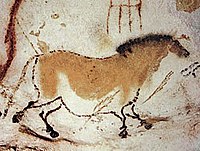
It is common in the history of art for people to dispute whether a particular form or work, or particular piece of work counts as art or not. In fact for much of the past century the idea of art has been to simply challenge what art is. Philosophers of Art call these disputes “classificatory disputes about art.” For example, Ancient Greek philosophers debated about whether or not ethics should be considered the "art of living well". Classificatory disputes in the 20th century included: cubist and impressionist paintings, Duchamp’s Fountain, the movies, superlative imitations of banknotes, propaganda, and even a crucifix immersed in urine. Conceptual art often intentionally pushes the boundaries of what counts as art and a number of recent conceptual artists, such as Damien Hirst and Tracy Emin have produced works about which there are active disputes. Video games and role-playing games are both fields where some recent critics have asserted that they do count as art, and some have asserted that they do not.
Philosopher David Novitz has argued that disagreement about the definition of art are rarely the heart of the problem. Rather, "the passionate concerns and interests that humans vest in their social life" are "so much a part of all classificatory disputes about art" (Novitz, 1996). According to Novitz, classificatory disputes are more often disputes about our values and where we are trying to go with our society than they are about theory proper. For example, when the Daily Mail criticized Hirst's and Emin’s work by arguing "For 1,000 years art has been one of our great civilising forces. Today, pickled sheep and soiled beds threaten to make barbarians of us all" they are not advancing a definition or theory about art, but questioning the value of Hirst’s and Emin’s work.

No comments:
Post a Comment